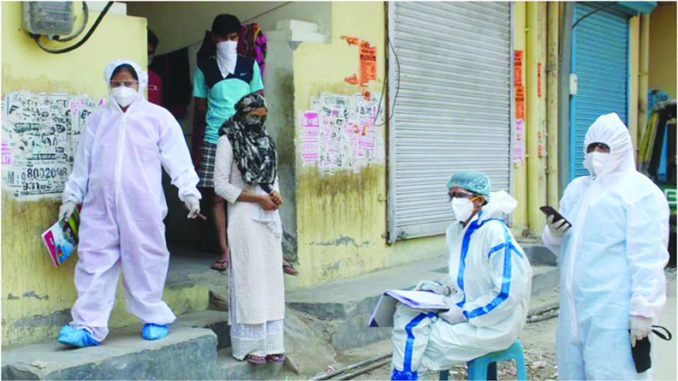
New Delhi (TIP): A disconcerting feature of the second wave of Covid-19 is the surge in cases in rural India. Compared with the first peak in September last year, the number of cases in India’s hinterland or backward regions has quadrupled, and so has the number of the dead.
The districts covered by the Backward Region Grant Fund (BRGF) — 243 of the 272 for which data are available — had more than 39.16 lakh people infected with the disease as on May 5. This is more than four times the 9.5 lakh infections at the peak of the first wave on September 16, 2020.
The burden of active cases in these districts is also much higher in the second wave, which is yet to peak. The active caseload right now is more than 4.2 times the peak active caseload in the first wave. More than 7.15 lakh people in these districts are currently infected with the disease, putting under extreme stress the sub-optimal healthcare infrastructure in rural districts.
This is probably reflected in the larger number of deaths in these districts. By May 5, the 243 districts together had reported 36,523 deaths, almost four times the number of dead at the peak of the first wave last year.
By September 16, 2020, those dead in these districts numbered 9,555.
Almost 54 per cent of the 272 districts under BRGF belong to just five districts: Bihar – 38, Uttar Pradesh – 35, Madhya Pradesh – 30, Jharkhand – 23 and Odisha – 20. These states also provide much of the labour force or migrant workers that powers the urban centres in the country.
While there is no urban-rural split of coronavirus cases directly available, an analysis of the case loads and deaths in BRGF districts gives an indication of the rural spread of the pandemic since these 272 districts are primarily rural and relatively less developed.
In absolute terms, the number of infections in the 243 districts quadrupled between the first and second waves, but as a percentage of total infections in the country it has remained almost exactly the same at 18.6 per cent. But the contribution of deaths from these districts had risen significantly. By September 16 last year, deaths in these districts accounted for 11.5 per cent of the national death toll of 83,198. On May 5, however, this contribution had increased to 16 per cent.
Most of these 272 districts provide only basic healthcare facilities. The new infrastructure being created by the states are mostly in bigger towns and cities. As a result, there is a large influx of patients from these districts to the nearest big town, which is adding to the burden on the already-stressed infrastructure in towns and cities.
Over 15% positivity in 24 states
Twenty-four states have reported a test positivity rate of more than 15 per cent for Covid-19 over the last week, the government said on Friday, May 7.
At least 30 districts had showed “a steep upward trend” in cases over the last two weeks. The data were a “matter of great concern”, the Health Ministry said.
Additional Secretary in the Ministry of Health Arti Ahuja said seven states had reported a very high test positivity rate of 30 per cent or more over the past week: Goa (48.5 per cent), Haryana (36.1 per cent), Puducherry (34.9 per cent), West Bengal (33.1 per cent), and Karnataka, Delhi, and Rajasthan (29.9 per cent each).
“There are 12 states with more than 1 lakh active cases, and seven states with 50,000 to 1 lakh active cases. Case positivity is an important indicator that shows how the cases are spread across [the country]. There are only three states with less than 5 per cent positivity, and nine states have positivity between 5 and 15 per cent. Twenty-four states have more than 15 per cent positivity. The high positivity is the cause of concern for us and the country,” Ahuja said.
Source: Indian Express





Be the first to comment